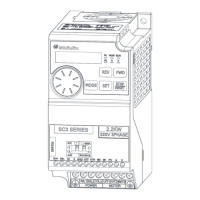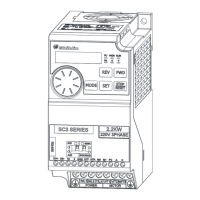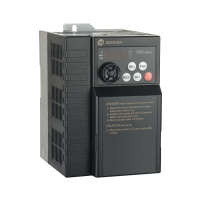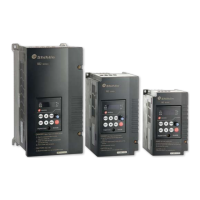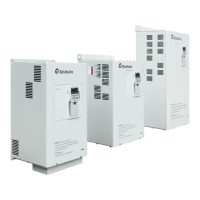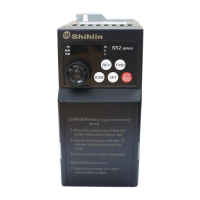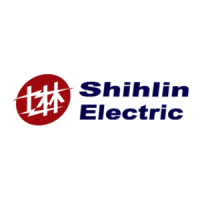
Do you have a question about the Shihlin electric SC3-021-0.75K and is the answer not in the manual?
| Model | SC3-021-0.75K |
|---|---|
| Power | 0.75 kW |
| Output Power | 0.75 kW |
| Voltage | 220V |
| Frequency | 50/60 Hz |
| Protection Level | IP20 |
| Input Voltage | 220V |
| Output Voltage | 220V |
Crucial safety guidelines for installation, operation, and maintenance.
Important considerations and environmental conditions for inverter installation.
Instructions for ensuring electromagnetic compatibility during installation.
Diagrams and specifications for main circuit and control wiring.
Explanation of the nine operation modes and five working modes of the built-in keypad.
Detailed steps for setting inverter parameters using the keypad.
Essential checks and preparations required before operating the inverter.
Procedure for testing the inverter and motor after installation.
Detailed description of system parameters in group 00.
Procedures for restoring parameters to default values.
Settings to prevent unauthorized changes to parameter values.
Selecting the method for stopping the inverter operation.
Selecting the inverter's operation mode and signal sources.
Setting upper and lower limits for the inverter's output frequency.
Adjusting inverter outputs to match motor rating for voltage and frequency.
Setting motor acceleration and deceleration times and curve types.
Choosing output characteristics for different load applications and patterns.
Setting acceleration and deceleration times for S-pattern curves.
Multiplying frequency command from analog input for fine-tuning.
Selecting terminal 3-5 signal specifications and frequency compensation.
Assigning functions to digital input terminals.
Configuring the function of the A-C digital output terminal.
Setting logic (positive/negative) for digital input and output terminals.
Selecting speeds using digital input terminals RL, RM, RH, and REX.
Using parameters for operation process control in machinery.
Function for accurate motor parameter measurement for vector control.
Setting motor parameters for optimal performance and compatibility.
Monitoring output current to prevent alarms and stops due to overcurrent.
Controlling regenerative braking usage rate with resistors or brake units.
Detecting over torque conditions to prevent alarms and stops.
Enabling and setting levels for ground leakage current detection.
Retrieving information about the latest 12 alarm codes.
Configuration and operation of the fire mode for fire control applications.
Linking and communicating with upper controllers via RS485.
Command codes and data for operation control and monitoring.
Configuring PID control for flow, volume, or pressure with analog signal feedback.
Setting PID parameters for automatic process control adjustment.
Adjusting DC brake time and torque for stopping the motor.
Selecting suitable start modes based on different load conditions.
Realizing variable speed control via digital input without analog signal.
Inverter self-resetting and restarting when alarms occur.
Daily and regular inspection items to prevent inverter faults.
List of alarm codes, their keypad display, causes, and troubleshooting steps.
Troubleshooting steps when the motor fails to run, covering main circuit, load, parameters, and control circuit.



